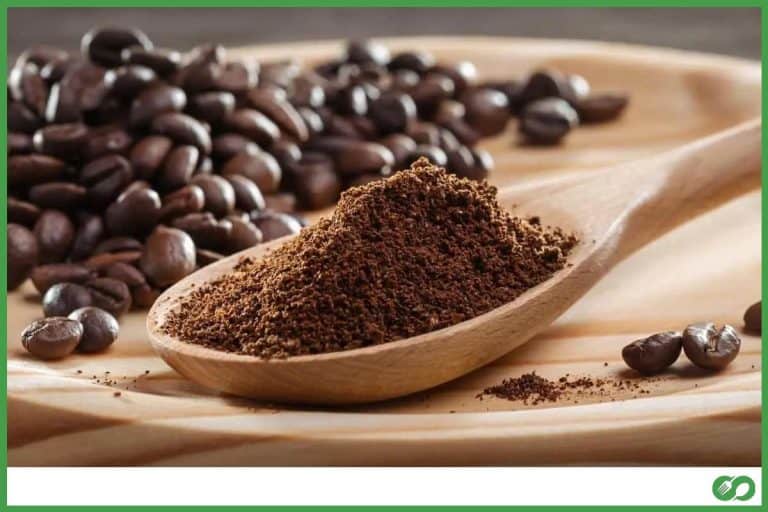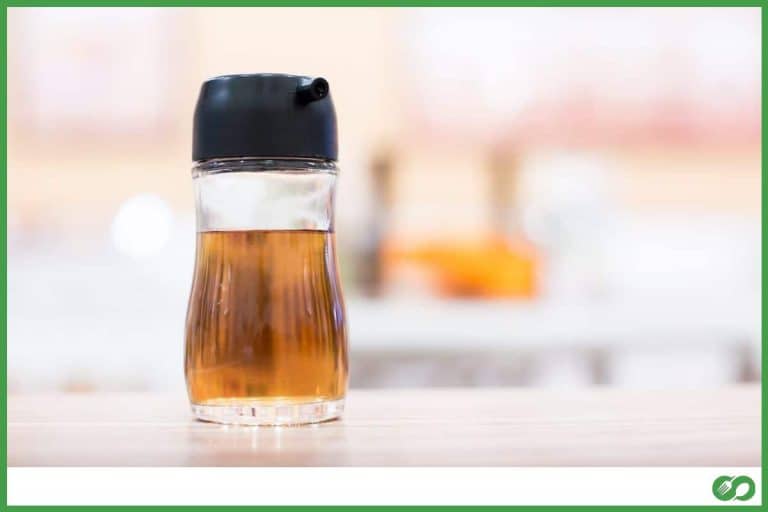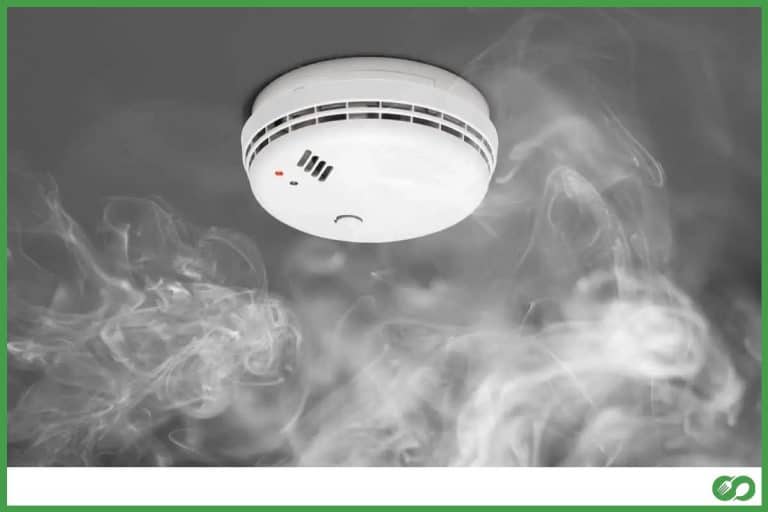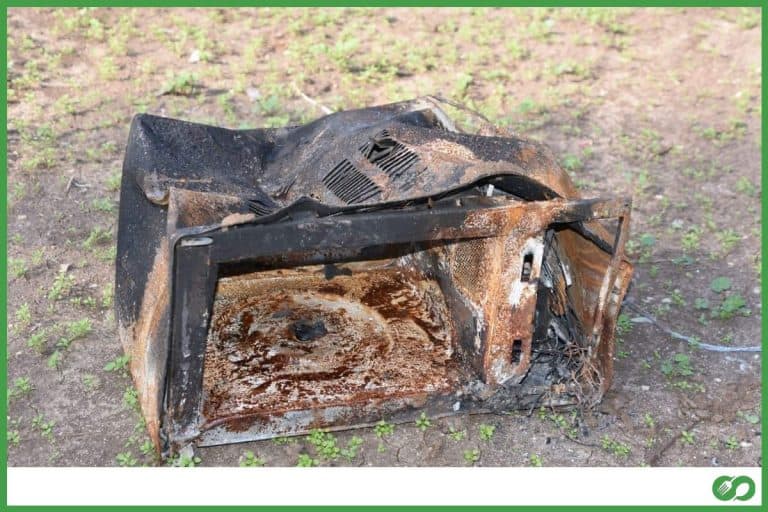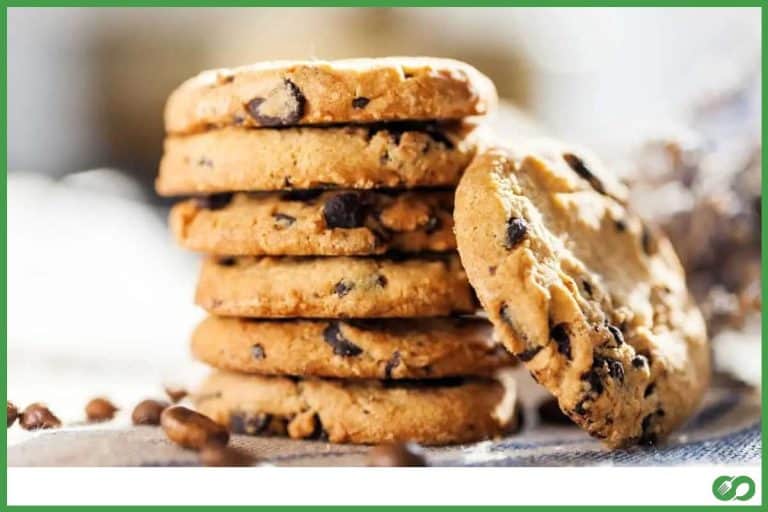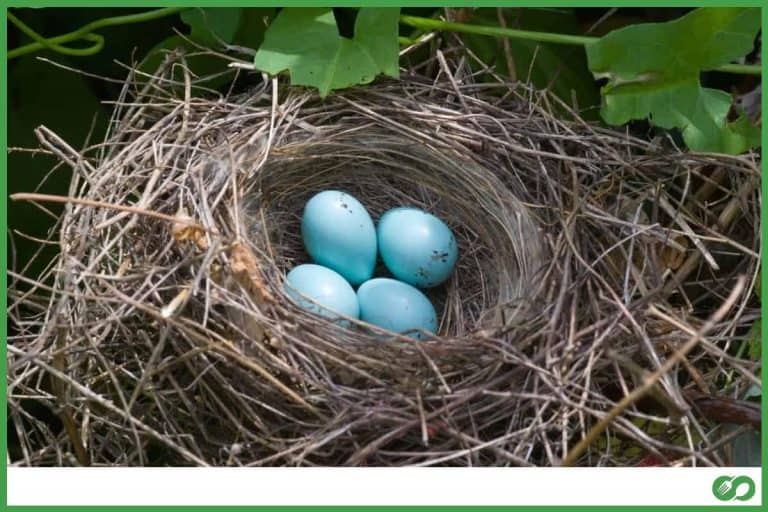Is It Safe To Eat Undercooked Pancakes?
This post may contain affiliate links which means that, if you choose to make a purchase, I may earn a small commission at no extra cost to you.
Almost everyone has been guilty of undercooking pancakes and then devouring them all to avoid being late for work or school. Despite the fact that it saves time, doing so can cause major consequences. Consuming undercooked pancakes is not as safe as you may have assumed.
Eating undercooked pancakes will not make you sick if you do it on rare occasions. Yet, having raw batter or undercooked pancakes not only increases the chance of hurting your stomach but can also lead to salmonella.
I understand you might be gulping down this alarming news if you are used to having slightly undercooked pancakes. Well, now you at least have your answer to the question of whether it is safe to eat undercooked pancakes. To help you out, in this article, I will highlight this topic a bit more and include more details. I would recommend reading the whole article.
Is It Unsafe To Eat Undercooked Pancakes?
While it is not advised to consume undercooked pancakes, if you end up doing so, you will still be fine. If your cooked pancakes are more on the raw side than the slightly gooey side, then that is a major cause of concern. If you end up having stomach aches or cramps, feeling nauseated or sick, take it as a sign that you need to go to the doctor.
Undercooked pancakes, which are runny or soft on the inside, will not taste that good. Yet, you can eat them. Maybe add a little bit of syrup or whipped cream to make them taste better.
The reason undercooked pancakes are safe to eat is that the batter has still come into close contact with more than substantial heat from the pan. This high heat kills off any germs that could have been present in the pancakes.
On the other hand, if your pancakes are completely raw, or to be more specific, if you are someone who consumes raw pancake batter, I would suggest you stop doing that immediately.
You might already know that anything that consists of raw eggs and/or flour is not safe to consume. Raw eggs consist of germs that can be detrimental to your stomach and health overall. The same thing applies to raw flour as well. As a result, the consumption of raw pancakes or pancake batter can easily expose you to salmonella.
Thus, before deciding to eat your cooked pancakes, you should take time to understand if they are cooked properly or not, and then proceed to eat them.
How To Fix Undercooked Or Overcooked Pancakes?
Pancakes that are not fully cooked can have two explanations: undercooked or overcooked pancakes. In order to fix your improperly cooked pancakes, you need to first understand where they went wrong in the first place.
Determining If Your Pancakes Are Cooked
First, you need to look into the implications of properly cooked pancakes. To help you out, below I have mentioned a few things you can pay attention to so you can test if your pancakes are cooked properly or not.
- When cooking them on a pan, you will see little bubbles starting to form on one side. You will see the edges looking a bit dry too. That is your indication that that side of the pancake is done being cooked and that you should flip the pancake so that the other side gets cooked too.
- If you are using a pan that is the non-sticky type, shake the pan a little after you are done cooking. Properly cooked pancakes will easily slide over the pan.
- Take a toothpick and stick it into the middle part of the pancake. If the toothpick comes out completely clean, it means that your pancakes are cooked to perfection.
Determining If Your Pancakes Are Undercooked
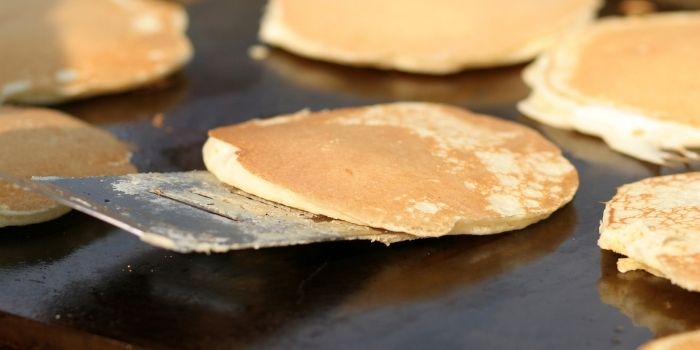
Now that you know what the signs of properly cooked pancakes are, let me discuss the specifics of undercooked pancakes.
Spatula technique: When you slide a spatula underneath your pancakes and you face difficulties getting the pancakes up or if you see your pancakes sticking to the surface of the pan, your pancakes are properly undercooked.
Shake the pan: Upon finishing the cooking of the pancakes, shake the pan slightly. If you see that the pancakes are stuck on the pan’s surface that is another indication that they are undercooked.
Toothpick insertion: Upon inserting a toothpick in the middle of the pancake, if the toothpick comes up coated with the insides of the pancake, your pancakes are definitely undercooked.
Fixing Undercooked Pancakes
There is no reason why you should throw away your pancakes if you think they are undercooked. They are completely salvageable. Below, I have the most effective solution.
Coat your undercooked pancakes with a little bit of butter on top, especially put more over the undercooked sides. Cook them again. This way, any undercooked part gets properly cooked.
Determining If Your Pancakes Are Overcooked
Understanding if your pancakes are overcooked or not will not require any special tests. Overcooked pancakes will simply not have the usual shade of golden-brown pancakes. They will look burnt and they will taste that way too. They will taste tough and chewy too.
Fixing Overcooked Pancakes
Unfortunately, there is nothing you can do to improve the taste or texture of overcooked pancakes. The most you can do is pour syrup over it to soften the overall texture, but I would suggest not to consume burnt food. Starting over is the best option in this case.
How To Ensure Your Pancakes Are Not Undercooked Or Overcooked?
To make sure that your pancakes are properly cooked, you need to know the proper process for cooking pancakes to perfection. Below, I have included a detailed and thorough set of tips that will help ensure that your pancakes are not undercooked or overcooked in any way.
- Always have your dry ingredients and wet ingredients in separate bowls. Mix them separately as well and Combine them later.
- The griddle that you plan to use should have temperature controls. The temperature should be 375 °F while preheating and then adjusted to 360 – 370 °F when cooking begins.
- 5-10 minutes is the ideal resting time for your pancake batter.
- Only flip your pancakes when there are small bubbles scattered throughout the surface of the first side of the pancakes. The edges of the pancake should have a brown hue as well.
Common Mistakes To Avoid
There are always common errors that stand as an obstacle to your perfectly cooked pancakes. Even if the ingredients, mixing the batter, and flipping time are perfect, they might still turn out to be undercooked and runny. Below are a few precautions you can take to avoid all that.
- Do not overmix the batter. Yes, I admit, the mixing part can be a satisfying experience. Yet the more you do it, the worse it is for your pancakes. While continuously mixing the batter, gluten begins to form rapidly across the batter’s surface. Overdoing it will provide a chewy and tough exterior and taste to the pancakes.
- Make sure your pan or griddle has the correct temperature. If your pan is too hot, the pancakes will be overcooked and possibly burnt. If there is not enough heat, the pancake batter will end up absorbing the residual grease and butter from your pan.
- Do not flip your pancakes at an earlier time. In addition, do not flip them consistently. The more you do it, the more the light and fluffy texture of the pancakes goes away as the overall pancakes begin to deflate. Throughout the entire cooking process, flip the pancakes only once.


